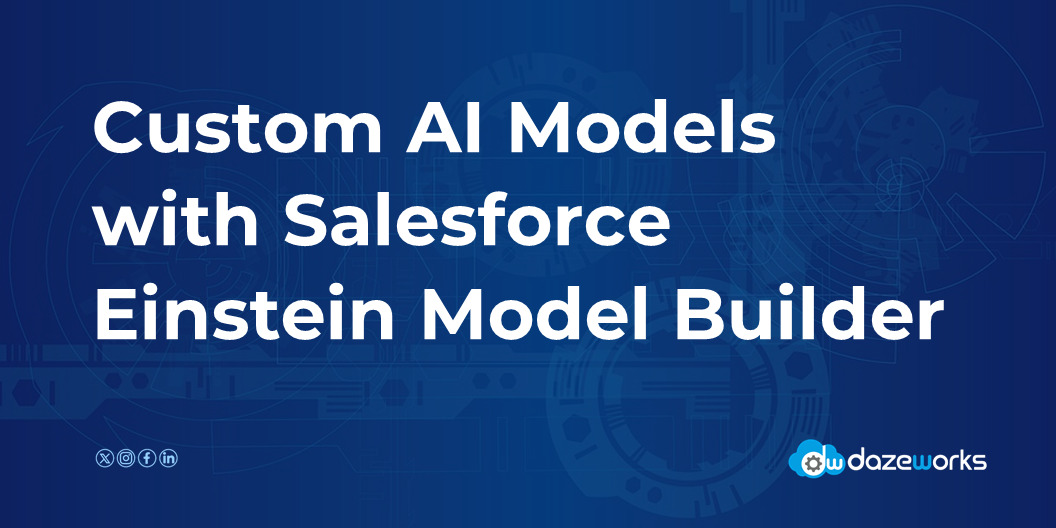
Custom AI Models with Salesforce Einstein Model Builder
minutes read
By now we have talked about Salesforce Einstein 1 Studio a lot on our blogs and rightfully so. But one of the features that we have not touched is its Einstein Model Builder. It allows you to connect data with your chosen large language model. What is a large language model? How does this feature help you? How easy is it to use? In this blog, we will be answering these questions and many more.
What is Einstein Model Builder?
Einstein Model Builder enables Salesforce users to create custom AI models that cater to specific needs without needing extensive expertise and integrations. It allows you to harness Salesforce data to train machine learning models and accomplish various tasks. With a Salesforce agnostic approach, you can use its Shared LLMS with Salesforce-hosted third-party LLMs or from other platforms such as Google Vertex and Amazon SageMaker.
Key Characteristics of Einstein Model Builder
Zero-Copy Data Access: This means that the data in Salesforce Data Cloud stays secure when the model engages with it on external platforms. This eliminates the need for data duplication or data movement.
- Bring Your Own Model: This functionality allows the use of pre-trained AI models on external platforms without having to rebuild them on Salesforce.
- Easy Integrations: Model Builder is designed to ensure seamless integrations between Salesforce workflows and custom AI models. It allows you to use AI-powered insights easily within a wide range of tasks.
- Real-Time Scoring: The integrated models can generate real-time predictions based on the data being added to Salesforce Data Cloud. This gives users immediate insights and helps them make data-driven decisions.
How to Build an AI Model in Data Cloud?
Step 1: Choose the type of model you want to Build. You have four options including:
Create a model from scratch.
- Connect to a SageMaker model.
- Connect to a Google Vortex AI model.
- Connect to a model on another platform.
Step 2: Choose the training data and define filters that may be relevant to the case.
Step 3: Select your model goal.
Step 4: The next step is to prepare the data. Select the fields (that will act as variables) that you want to include in the model.
Step 5: Select the algorithm for the mode. GLM, GBM and XGBoost are your options.
Step 6: The final step is to review all the fields, save them, and train the model.
After activation, you can see the details of the model on the record page. It will provide all the useful information including the job name, status, type, last run date, and status.
How Model Builder Benefits Your Business?
- Enhanced Efficiency: The integration of AI-powered predictions within Salesforce can streamline processes and automate tasks. This significantly frees up valuable time for your teams that can be spent on more important tasks.
- Improved CRM Functionality: The capabilities of Model Builders extend to CRM. By allowing you to use custom AI models for automated workflows, enriched customer data, and better insight, Model Builders enhances the functionality of Salesforce.
- Higher Flexibility: Model Builder extends flexibility by allowing users to integrate models developed on their preferred platform. This way you can stick to the platform that caters to your AI infrastructure.
- Security Assurance: Model Builder uses a zero-copy approach to ensure the safety of your data within Data Cloud while the model interacts with it.
Conclusion
Salesforce Model Builder is a robust tool that allows you to combine data with LLMs in a unified and secure platform. And the best part is you have complete control as the user and can easily manage models through clicks. If you are ready to make the most of Salesforce Einstein 1, then you need a team like us at Dazeworks by your side.
